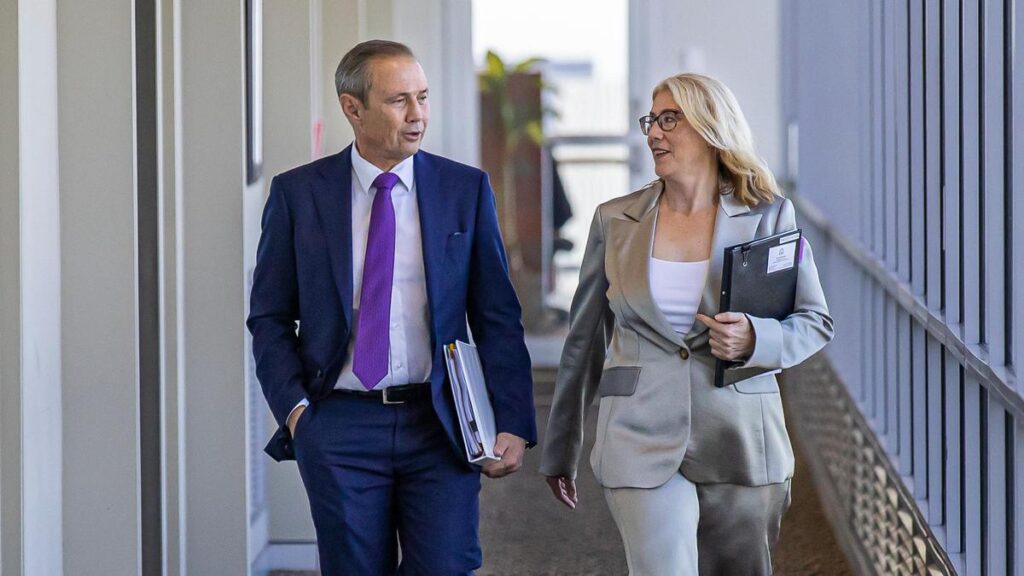A $15 billion plan to upgrade infrastructure and ‘make more things’ in WA will need to grapple with a severe worker shortage and the threat of rising costs.
Treasurer Rita Saffioti said jobs growth would be the measure of success as she handed down her second Budget, with pledges to build the energy grid, water pipelines and ports and a cash splash on local manufacturing.
But with the May jobless rate at just 3.9 per cent in WA and the Budget tipping unemployment to remain low, economists and industry representatives have warned the Government will be pressed to find workers.
Getting WA kitted out with an expanded power grid, better water supplies and new ports to enable more manufacturing opportunities had been a key ask from business leading up to the Budget.
Those pleas were answered with $7b set aside for the energy grid, $6b for water pipelines and a desalination plant, and cash for planning and expanding ports, all over the next four years.
Committee for Economic Development of Australia chief economist Cassandra Winzar warned the infrastructure agenda would be “difficult to deliver”.
“It is unclear whether the delivery of this infrastructure pipeline is achievable with the current capacity constraints in the construction industry,” Ms Winzar said.
She warned private sector investment and housing projects could be crowded out by the spending spree.
That means workers will be sucked into another round of State-funded infrastructure programs which will add to pressure across the construction industry, including housing.
But Ms Winzar said moves to bring more construction workers through migration were positive.
It comes just days after Multiplex boss Chris Palandri warned of major ramp up in local construction jobs next year including the Perth Aiirport redevelopment.
Housing Industry Association executive director Michael McGowan welcomed moves to boost supply of new homes but warned the “biggest challenge to the State Government achieving its agenda is boots on the ground”.
“There has never been a better time to join the construction industry in Western Australia,” he said.
“The WA Government has outlined a strong pipeline of work, a supportive training environment and financial incentives for workers from interstate and overseas.”
Buried in the Budget papers was a warning that ongoing construction projects faced the risk of blowouts. Treasury warned infrastructure builds were still getting hit by rising costs, and warned of delays because of the tight labour market.
Chamber of Commerce and Industry WA chief economist Aaron Morey pointed to State Government forecasts that showed unemployment rates were on track to normalise, potentially freeing up labour.
“The State Government is forecasting a bit of an easing in the unemployment rate up above 4 per cent (in 2027) which is getting towards your long-term average,” he said.
Mr Morey said further initiatives in the Budget to increase the pipeline of apprentices — largely focused on more low-fee TAFE courses — were important initiatives in the context of delivering future projects.
Handouts for the Made in WA anchor policy were close to $300 million, including $83m to assemble electric buses and ferries, $25 million to make transmission towers and $50m for a biomedical precinct, among others.
A doubling of a ‘strategic industries fund’ to $1b for the coming financial year was a “good start” according to Kwinana Industries Council chief David Harrison.
“It’s a welcome start. . . but it can’t be a one-year sugar hit. We need to have this ongoing investment, because we are in globally competitive times.”
https://thewest.com.au/business/economy/boots-on-the-ground-worker-drought-and-cost-overruns-hurdles-in-delivering-the-big-made-in-wa-dream-c-19089352


